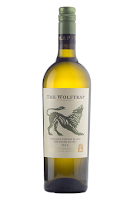The Bridge Bar
Fine Wine, Craft Beer, Top Spirits, Tasty Food, Music
It is the last day of August and very wet as we reach Bridge Street in Cork’s Victorian Quarter. We didn’t complain too much about the rain after such a fine summer - remembering that we were praying for it a few weeks back.
In any case, we were going indoors, into the warm and snug Bridge Bar. Here, a few yards from Patrick Bridge, they serve fine wines, classic cocktails, craft beers and some really cracking gins (including quite a few Irish ones).
 They also do a great pre theatre offer of a bottle of wine with a sharing board of light bites for two for €25 which is well worth a try judging by our experience. And if it’s just a drink you want then this long and narrow bar is perfectly situated if you’d fancy a drink before or after the show at the nearby Everyman or when dining on McCurtain Street.
They also do a great pre theatre offer of a bottle of wine with a sharing board of light bites for two for €25 which is well worth a try judging by our experience. And if it’s just a drink you want then this long and narrow bar is perfectly situated if you’d fancy a drink before or after the show at the nearby Everyman or when dining on McCurtain Street.
They also do a great Aperitivo & Nibbles, available Monday to Saturday 5 - 7pm. Enjoy two Gin & Tonics or Aperol Spritz with nibbles for €12.
When we were seated at the bar, we had a quick look at the wines on offer, quite a few very tempting indeed. The Spanish Ayud Chardonnay is unoaked and organic and, on the red side, I spotted the delicious Samurai Shiraz from Australia.
But beer won out in the end. They have the usual main stream beers and also quite an array of craft beer on tap as well including Blacks of Kinsale, Yellow Belly, Kinnegar, White Hag, and Franciscan Well. And more keep coming according to manager Gavin.
We enjoyed the Kinsale Pale Ale and also the Ale from Sligo’s White Hag. In the meantime, we had a look at the food board. They have Valencia Salted Almonds and Olives Marinated in Chili with Thyme and Garlic as nibbles. There’s a very tempting meat and cheese board for sharing for €15.00.
 |
| White wines |
The value is excellent here as we found out when we shared the Antipasto Board with cheese and no shortage of bread. The cheeses were Coolea and Cashel Blue and came with lots of little bowls including three tasty dips/spreads (including a beetroot hummus), a dish of artichoke hearts, a fine mix of marinated olives and a few other bits and pieces, all for a tenner! Top class stuff, as you can see by the cheese offerings, very tasty indeed and amazing value.
We were in early on Friday and the place gradually began to fill. Back in the spring of the year, we called in there much later in the evening and the Bridge was packed, great craic, and music playing. The Bridge is now heading into its second winter here and the frequency of live music events will increase as the daylight decreases.
You’ll also see they do talks on everything from whiskey, to local foods and Big Sporting events on the large screen too. Handy spot too for a party. Indeed there is a free White Hag beer tasting on this evening. Check them all out on Facebook @thebridgecork and Twitter @thebridgecork.
6 Bridge St
Cork
Message: m.me/thebridgecork
Call (021) 239 6185
 |
| The Bridge (pic by The Bridge) |































